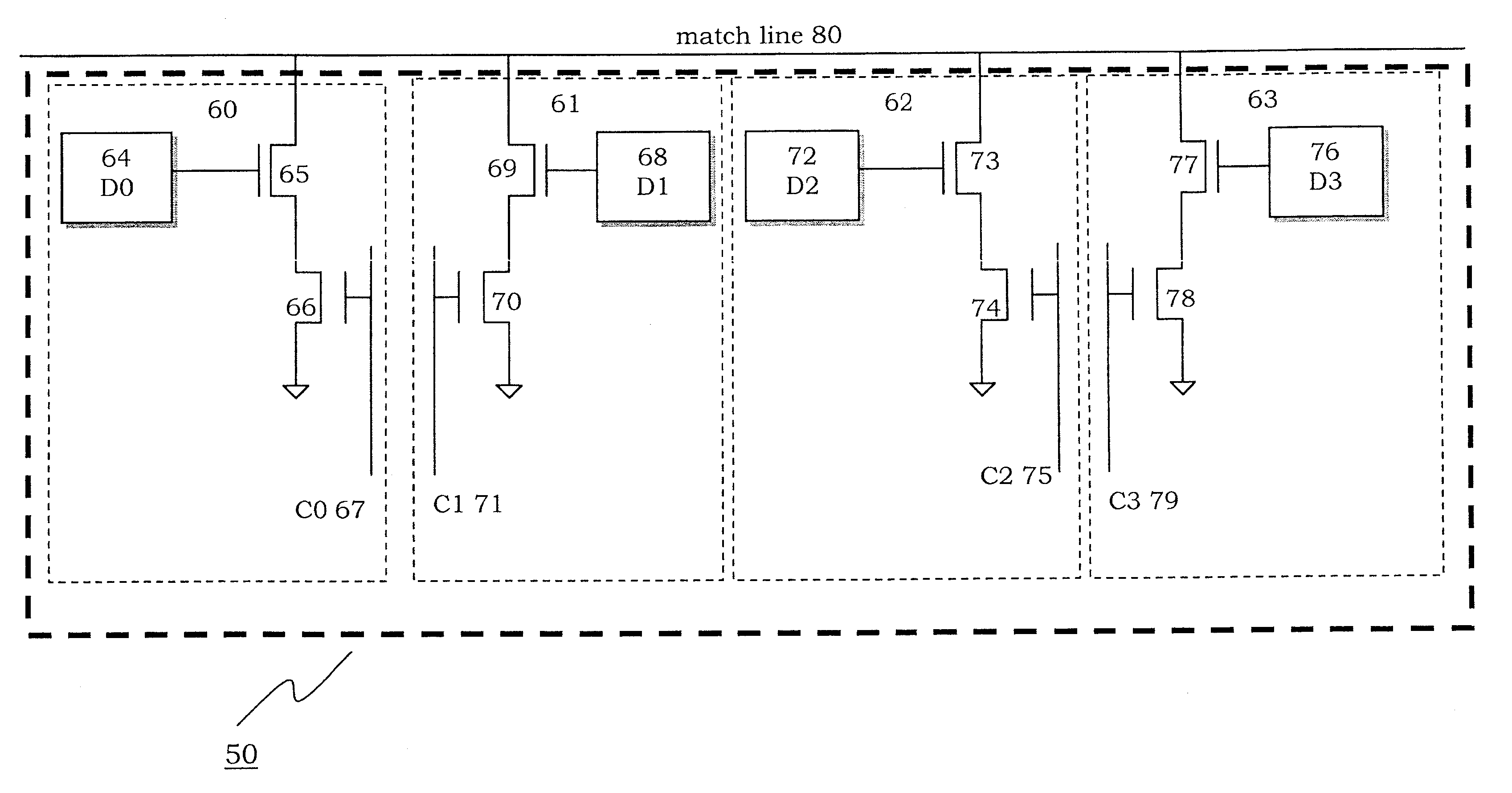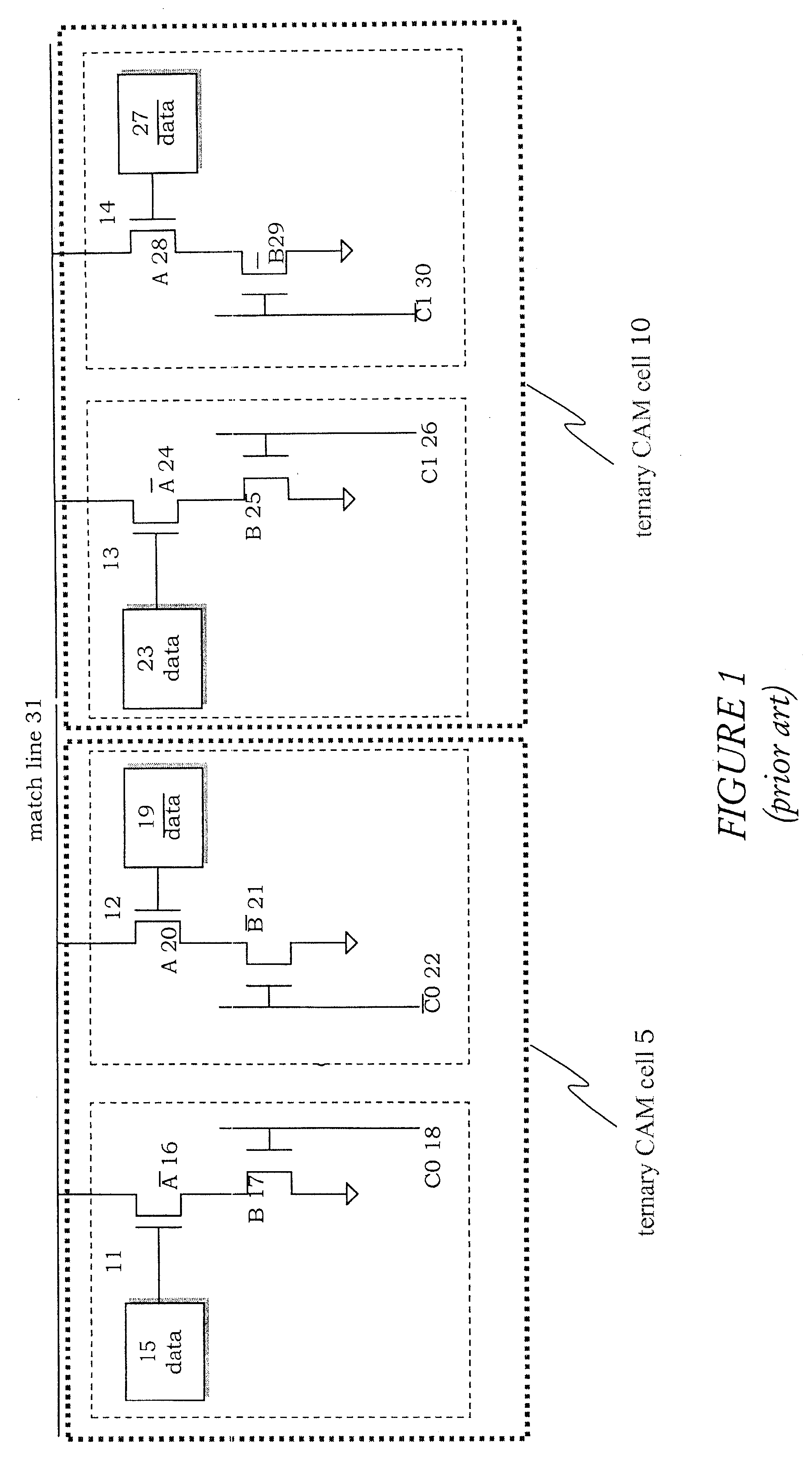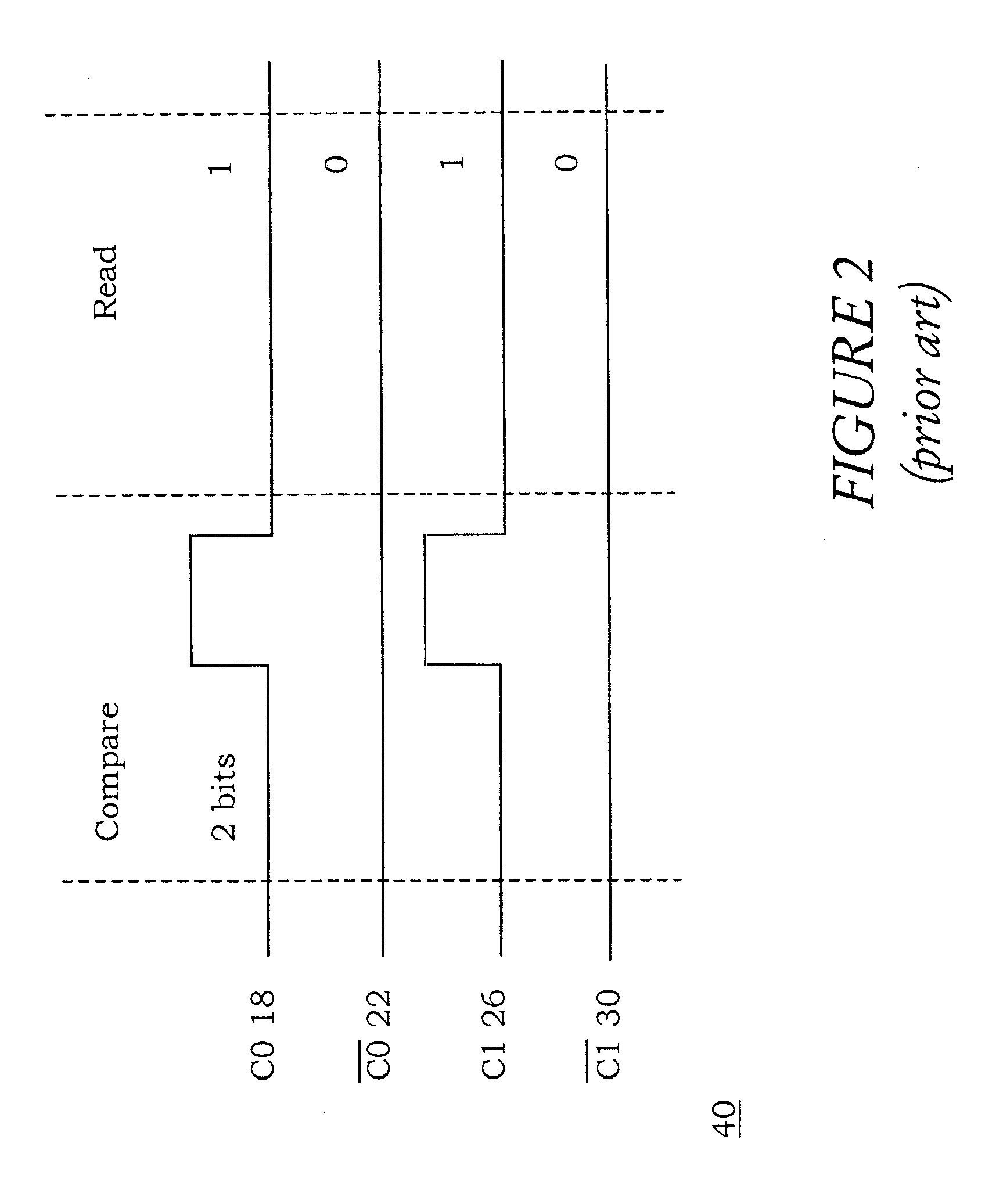Structure and method of an encoded ternary content addressable memory (CAM) cell for low-power compare operation
a technology of ternary content and addressable memory, applied in the field of integrated circuits, can solve the problems of large power consumption, significant power consumption of acam, and relative small power consumption
- Summary
- Abstract
- Description
- Claims
- Application Information
AI Technical Summary
Problems solved by technology
Method used
Image
Examples
Embodiment Construction
FIG. 3 is a simplified block diagram illustrating a low-power ternary CAM configuration. An encoder / decoder 51 is coupled to a twin ternary CAM cell 50 for encoding raw data from a writing operation 52. Encoder / decoder 51 executes a write operation 53 or a compare operation 54 to twin ternary CAM cell 50. When reading from twin ternary CAM cell 52, encoder / decoder 51 decodes the encoded data to generate an output of raw data 56.
FIG. 4 is a circuit diagram illustrating twin ternary CAM cell 50 with encoded comparand datalines, including a first CAM bit 60, a second CAM bit 61, a third CAM bit 62, and a fourth CAM bit 63, interconnected by a match line 80. Each CAM bit is associated with a comparand dataline. Four comparand datalines, C067, C171, C275, and C379 are used in twin ternary CAM cell 50.
Twin ternary CAM cell 50 includes four CAM bits, one cell as the combination of CAM bits 60 and 61, and the other cell as the combination of CAM bits 62 and 63. It is apparent to one of ordi...
PUM
 Login to View More
Login to View More Abstract
Description
Claims
Application Information
 Login to View More
Login to View More - R&D
- Intellectual Property
- Life Sciences
- Materials
- Tech Scout
- Unparalleled Data Quality
- Higher Quality Content
- 60% Fewer Hallucinations
Browse by: Latest US Patents, China's latest patents, Technical Efficacy Thesaurus, Application Domain, Technology Topic, Popular Technical Reports.
© 2025 PatSnap. All rights reserved.Legal|Privacy policy|Modern Slavery Act Transparency Statement|Sitemap|About US| Contact US: help@patsnap.com



